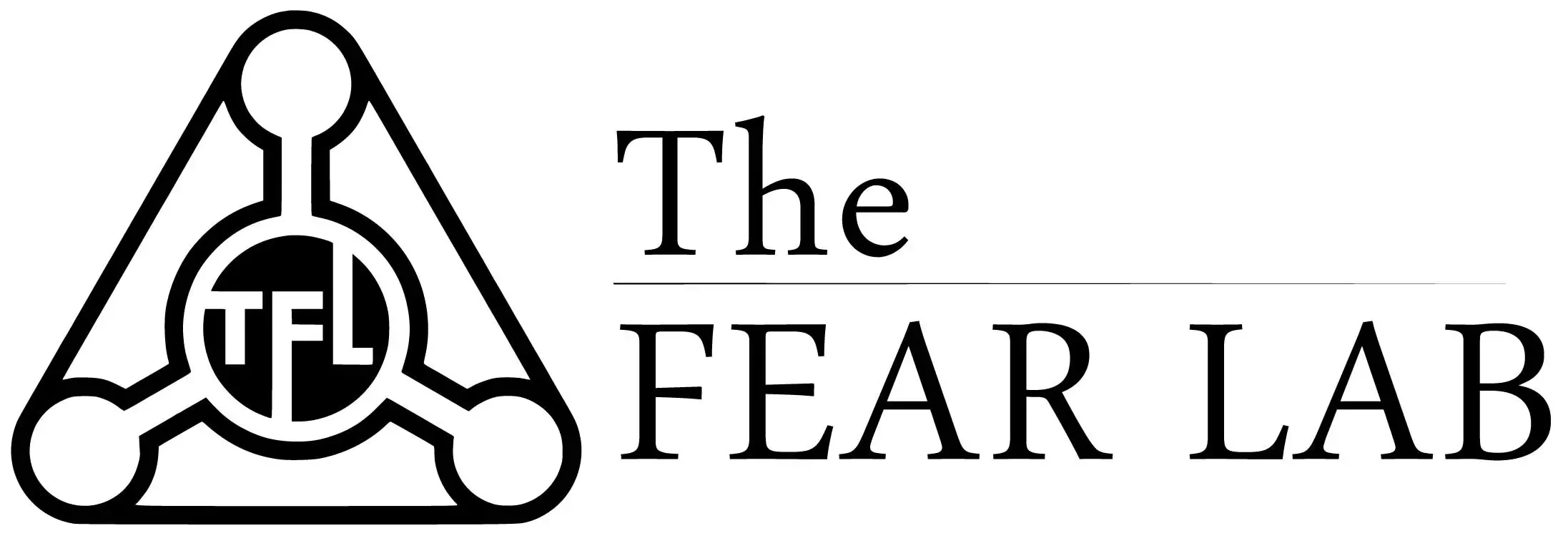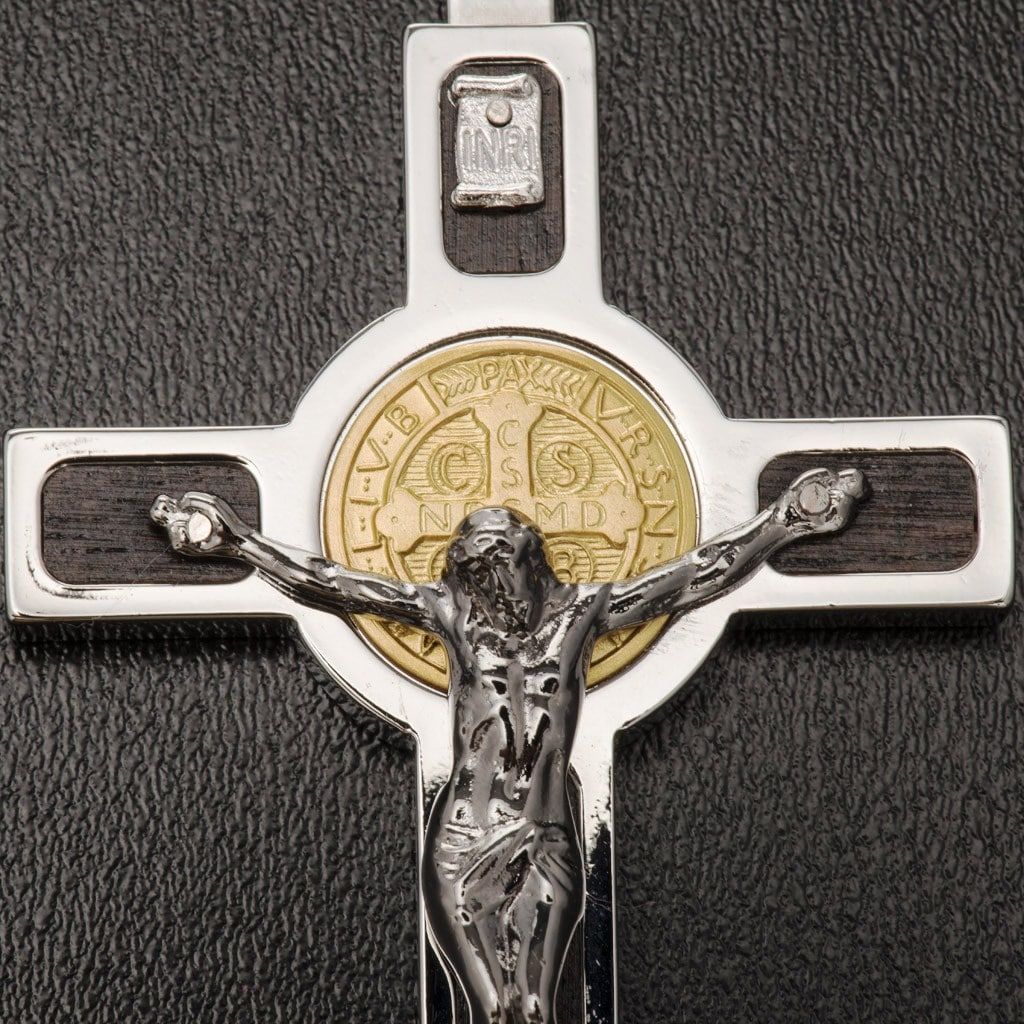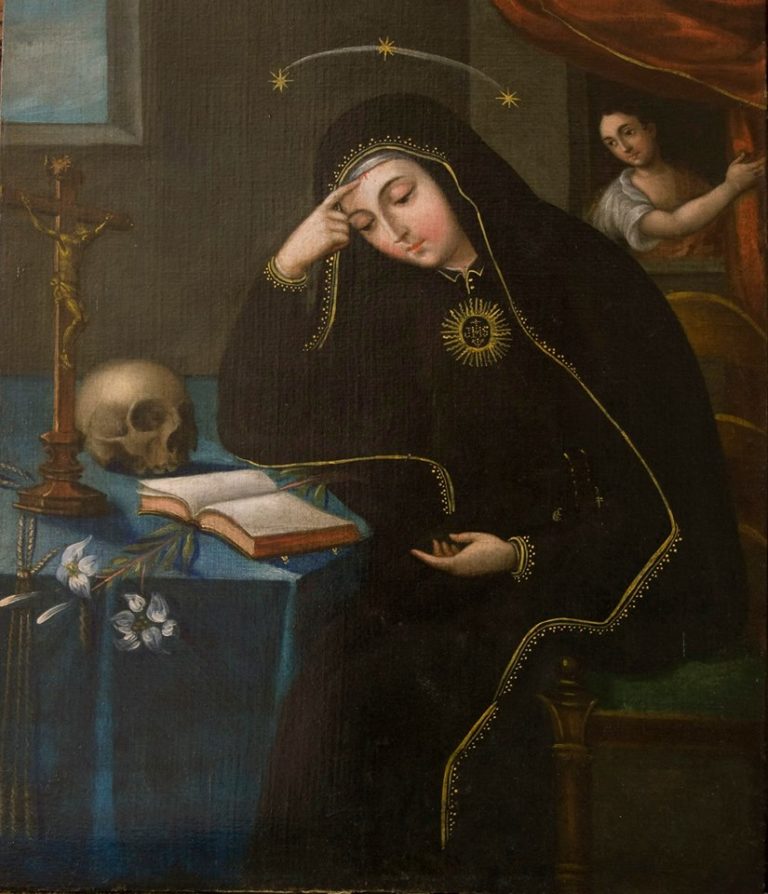Saint Benedict Medal: Meaning, prayers and more
The medal of Saint Benedict is one of the oldest symbols of Christianity, it is used to give protection against evil to those who have the indulgence and the grace to wear it, it is based on the image of Saint Benedict of Nursia, in this article you will be able to Learn more about this medal.
Saint Benedict Medal
It is a Christian medal that contains various images, figures, symbols and letters that reflect a devotion to the figure of Jesus Christ, it is called that way because the image of Saint Benedict of Nursia appears on it, who was a saint devoted to Jesus.
It is used by various Christian currents such as Anglicans, Catholic believers, Methodists, some Lutheran and Orthodox communities in the Western world, it is considered one of the most important symbols of Christianity and the oldest, it contains a series of phrases in Latin that we will detail later.
The medal represents in a spiritual sense, a way of having protection against the evil energies of satan, who wears it is protected against all existing spiritual evil.
History and origin of the medal
There are several versions that describe the origin and birth of the medal of Saint Benedict, some even attribute the creation of the image of the medal of Saint Benedict , to Pope Benedict XIV, around the year 1742, however, historians attribute its appearance around the year 1642, when a group of women were tried for witchcraft.
In the trial process they were accused of trying to destroy the Metten monastery in the city of Bavaria, Germany, they alleged that they could not destroy it, because a cross prevented them from carrying out their misdeed.
Those who were handling the case went to the monastery and were able to verify that the walls had a series of paintings and frescoes with symbols, crosses and letters that no one could decipher, the inscriptions were very confusing, so a mystery had been created.
After a few years, in the same library of the monastery, some manuscripts appeared that had the same initials and symbols dating from the year 1414 (Today that manuscript is preserved in the state library of Munich), where the image of Saint Benedict of Nursia appeared.
It is believed that this manuscript is the origin of the appearance of the symbols and image of the medal, when the information reaches Pope Benedict XIV in the year 1742, he proceeds to formulate his blessing and incorporate it into the Roman rite, granting indulgences to the bearers of the medal, thus becoming one of the most important symbols of Christianity.
What is the Saint Benedict medal?
There is a version of the medal that dates back to 1880 and is a replica of the figures found in the monastery where it is intended to fully reflect the inscriptions that Pope Benedict XIV authorized to place at that time, and which is currently in the Vatican. thanks to him superior abbot of the famous Benedictine abbey of Monte Cassino in Italy.
The way in which the Saint Benedict medal is used depends on how the faithful wish to place it, some use it in various parts of the body and places, such as houses, offices, in order to protect themselves from the evil actions of Satan.
Description and symbols of the medal
This medal represents an exaltation of the figure of Jesus, over time it has become a Catholic devotion, where those who wear the medal have the power to ward off evil through faith, it is believed that in the world there are only seven sacred medallions scattered throughout the world.
medal front
It is composed of various figures, numbers and letters, mainly by the figure of Saint Benedict of Nursia holding a small cross in his right hand, in his left hand he carries a book of rules, written by himself, describing a prayer to a good death, this phrase surrounds the figure of Saint Benedict of Nursia and reads thus:
“Eius in obitu nostro praesentia muniamur” , which translated into Spanish is: “At the hour of our death let us be protected by his presence”.
That is why Saint Benedict is considered the patron saint of a good death, a privilege that he shares with Saint Joseph. At the bottom of the medal appears a poisoned cup that represents the moment in which Saint Benedict is presented with a snake when he made the Sign of the Cross.
This represents the jealous enemy who tried to poison him by giving him a piece of bread with poison, and Saint Benedict gave it to a raven, this allegory also appears on the medal, behind the image appears the phrase “Crux sancti patris Benedicti”, Cruz del Holy Father Benedict.
Back of the medal
The reverse shows the cross of San Benito where the following initials are inscribed:
- CSPB which means “Cross of the Holy Father Benito”.
- CSSML (Crux Sacra Sit Mihi Lux), “The Holy Cross be my light” or “Vertical Cruise of the Cross”.
- NDSMD (Non Draco Sit Mihi Dux), “Let not the dragon be my guide”, where “dux” means duke or lord in a feudal-type sense, in antagonism to God.
- The circle surrounding the medal reads the following VRS (Vade Retro Satana!): “Back off, Satan!”, where “Vade” means go and “retro” back, followed by NSMV “Nunquam, (which some say is actually what was given at the beginning was “non”), Suade Mihi Vana”, Do not advise me bad things.
- Then SMQL (Sunt Mala Quae Libas) is observed, which means “Poisonous is your bait”, or “what you offer me is bad”.
- IVB (Ipse Venena bibas): “Drink your poison yourself.”
- PAX: “Peace.”
Also in the back you can see an altar and a chalice from which the snake comes out. The medal is used in various ways, hanging with a chain around the neck, in the form of a rosary, in the pocket, in the center of the cross, in the vehicle, behind the door of the house or at the entrance of the building or the office.
The medal, as it is now known, is that of the jubilee of 1880 for the 1400 years of the saint’s birth. It was launched exclusively by the superior abbot of the famous Benedictine abbey of Monte Cassino in Italy.
With it you can obtain the plenary indulgence on the Feast of Saint Benedict, which the Church celebrates on July 11, following the usual conditions that the Church commands: sacramental confession, Eucharistic communion and prayer for the intentions of the Pope.
medal indulgences
Pope Benedict XIV granted indulgences (special attitude given to the person to forgive offenses, or punish them with benevolence, judge the errors of others without severity) to the medal, but only those who met the following conditions:
- perform the sacrament of reconciliation,
- receive the Eucharist
- Pray for the Holy Father on the great holidays (Christmas, Epiphany, Easter, Ascension, Pentecost, the Holy Trinity, Corpus Christi, the Assumption of Mary, the Immaculate Conception, the birth of Mary, all Saints and the feast of St. Benito), but mainly in the major week.
- Visit the sick.
- Help the poor.
- Teach the Christian faith and participate permanently in the Holy Mass.
Partial Indulgences
This type of indulgence allows the benefits to be granted and the medal to be worn for 200 days when some faithful who meet the following requirements:
- Visit the sick for a week
- Visit the Church constantly and teach the faith.
100 days of indulgence are granted if a prayer is said before Holy Mass or receiving Holy Communion. Anyone who by himself has the ability to convert a sinner, obtains a third of the remission of his sins.
You can also grant 7 years of indulgence and wear the medal when praying for the well-being of Christians, praying for rulers and officiating at mass, accompanying the sick especially on All Saints’ Day and constantly visiting the church.
plenary indulgence
Of course, it is the most important symbol together with the cross of the holy crucifix as the most important elements to obtain the indulgence, which takes place every July 11 in commemoration of the plenary feast of Saint Benedict, making communion, confession and Eucharistic communion.
Meaning of the Crucifix with the Saint Benedict medal
Called the crucifix of good death, it is a symbol recognized by the Church in order to help Christians to avoid temptations, dangers, but mainly at the moment of death.
The crucifix with the medal represents an act of indulgence to whoever wears it, so that all they have to do is make a confession, receive communion or repent of all their sins in the name of Jesus, but the indulgence is not only achieve with the cross, but must surrender to Jesus crucified.
Saint Benedict and the sign of the cross to obtain divine protection
It is a story that is described with symbols and words on the medal and it is when they tried to poison Saint Benedict, so that when the poisoned chalice was presented to him he made the customary sign of the cross and the chalice itself broke into pieces.
The exorcism power of the medal
Some believe that the medal has great power to perform exorcisms and other actions, but many wonder what is the Saint Benedict medal for ? It should be used in spiritual healing processes together with the following sacraments:
- “These sacred signs with which, imitating in some way the sacraments, effects are expressed, especially spiritual, obtained through the intercession of the Church.”
- “Men are disposed to receive the main effect of the sacraments and the various circumstances of life are sanctified.”
Saint Benedict with a cross and the book of his rules
This allegory in the medal reflects a writing that says “Cruz del Santo Padre Benito “, where there is also a cup from which the raven and a viper come out and in the lower part it reads “Ex. SM Cassino MDCCCLXXX”, referring to Santo Monte Cassino 1880.
Special prayer to the medal
It is done in order to bless her and must be done by any Christian priest, in order to grant her the blessing and the power to protect her, it goes like this:
“Our help comes to us from the Lord, who made heaven and earth. I order you, spirit of evil, to abandon this medal, in the name of God the Father Almighty, who made heaven and earth, the sea and everything that is contained in them.”
“May all the strength of the adversary, all the power of the devil, all the attacks and illusions of satan, disappear and move away from this medal, so that all who wear it may enjoy health of soul and body.”
“Almighty God, giver of all goods, we humbly beg you that through the intercession of our Father Saint Benedict, infuse your blessing on this sacred medal, so that whoever wears it, dedicating himself to good works, deserves to achieve the health of the soul and body.”
“The grace of sanctification, and all the indulgences that are granted to us, and that by the help of your mercy I strive to avoid the snares and deceptions of the devil, and deserve to appear holy and clean in your presence. We ask this through Christ, our Lord. Amen.”

Hello! Let me enthusiastically introduce myself as a dedicated blogger fueled by an intense passion for meticulously crafting insightful and well-researched blogs. My mission revolves around providing you, dear readers, with a veritable treasure trove of invaluable information.







